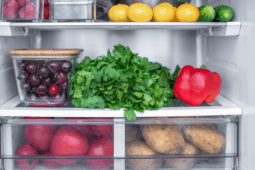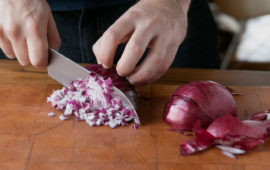The No Bullshit Way to Bake Your Own Bread
Want to make no knead bread in a Dutch oven? It's not nearly as hard as it sounds.
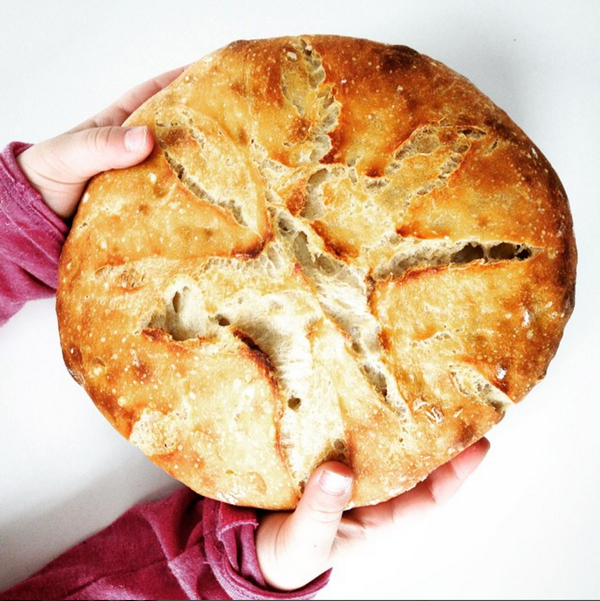
Gluten is my homeboy. I don't care what the fad-diets say (and apologies to those of you who are truly gluten-intolerant). Paleo-be-damned, I'm grateful our ancestors developed agriculture, so we could stop foraging and eat mostly bread (and also develop science, art, culture, etc.).
Great bread is easy to make. This is a no-knead recipe! Meaning, you don't, um… knead it. Duh. It's based on the Jim Lahey no knead bread recipe.
Here's how I do it:
1. Get a sourdough starter from a friend (or make your own, or order one online).
2. In a plastic bin with an airtight lid (I use this one), mix until just combined:
- 11 ounces of all purpose flour
- 8 ounces of sourdough starter
- 10 ounces of room-temperature water
- 1 tsp salt (more or less, to taste)
3. Cover tightly and let the dough sit at room temp for twelve-ish hours. Then put it in the fridge for a while (a few hours, overnight, several days, doesn't really matter).
4. When you're ready to bake, turn your oven to 450 degrees (convection on if you have it), and put an enameled cast-iron pot (dutch oven) inside, with the lid on. If you don't have one, try any heavy-bottomed cookware (something that will retain a lot of heat).

5. While the pot is heating up (30-45 minutes), pour your dough onto a well-floured countertop. Love your dough. Be gentle with your dough. Don't pound, knead, or stretch it. With flour-y hands (or a bench scraper), quickly fold the dough over once, rotate 90 degrees, and fold over again. Now (Gently! Lovingly! Sensually? No, just gently is fine) work the sides of the dough down underneath it, rotating as you go, until it becomes a boule. You should be gradually stretching the top of the boule down underneath until you have a nice, smooth, round hunk of dough.
6. Take out the dutch oven and put the boule in. Use plenty of flour (on your hands, and dusted all over the dough) to make this easier. Should you burn your hands on the extremely hot cast iron? No! You should avoid that. Once it's in, make four quick slashes in the dough using a very sharp knife (or razor blade, or katana sword). Cover and return to the oven.
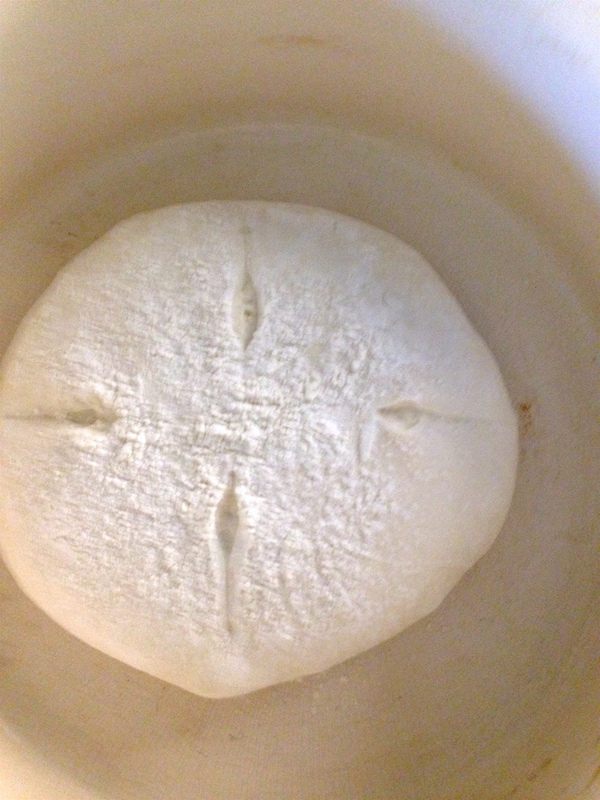
7. 30-or-so minutes later, check your bread. It should be mostly done springing up. Now you can remove the lid from the dutch oven, and rotate the pot for more even baking, and leave it in the oven another 30-ish minutes. Note the vague time indications; bread is done when it looks, smells, and sounds (and tastes) done. A timer is a crutch.
(Below: oven spring is done, this one is ready to bake uncovered)
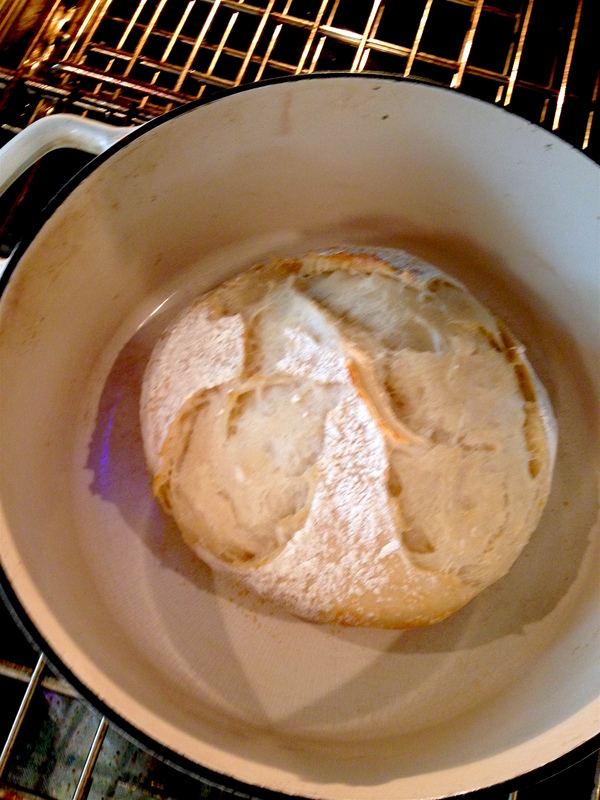
8. Wait for the bread to look and sound done (knock on the bottom, it should sound delicious and hollow but not dried out). Better to over-bake than under-bake it (if you're unsure). I wait for some of the wispy parts to start turning almost black/charred.
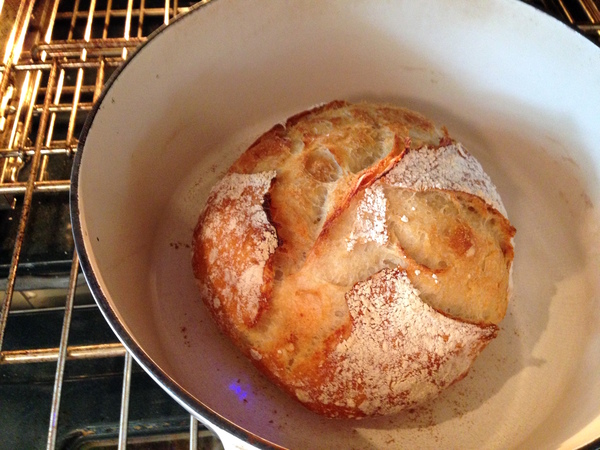
9. Take it out and let cool on a cooling rack, fending off your hungry children/spouse with the katana sword, saying 'Back! Back savages! Can't you see it's resting!?' Defend your beloved loaf of bread.

That's it. Slice it nice and thick, spraying crispy crust crumbs all over the place. If you manage not to eat it all in one sitting, store it out on a cutting board, sliced side down, or in a paper bag.
Ours never lasts more than 24 hours.
Troubleshooting
1. Ask someone else – I'm not an expert baker.
2. If your dough is way too sticky/wet to work with when you take it out of the fridge, try a little less water (I use 9oz. instead of ten).
3. Dough is too dense? Make sure you're handling it gently during shaping. Once it's out of the fridge, you want to keep as much air in it as possible.
4. Not enough initial spring? Make sure your oven is hot (at least 450, ovens vary a lot, even if the dial says 450) and that your pot has had enough time to really heat up.
5. Doughy/undercooked in the middle? I'm not totally sure why this happens, but I think it because the crust starts to set before the boule has had time to finish springing up. Also could be because the dough is too dry/tight, so it can't expand. Hit Command-Z a few times, or toss that loaf and try again.
Are you an expert dough-slinger, or a beginning glutenphile? Let me know how your bread turns out, or what I'm doing wrong! Posting a bread picture in the comments is totally not dorky.







